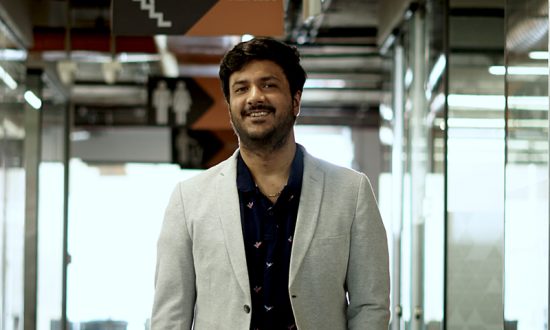Atulya Kaushik is the co-founder and CEO of PrepInsta, one of the fastest-growing placement enhancement skill companies in India. He is responsible for managing the growth roadmap for the company and also strategizing its product operations. Atulya Kaushik is a CSE graduate from VIT, Vellore, and has received a Chancellor award in his college. Previously Atul had worked for a startup called Trupay which was acquired by Google India. He also has work experience with Instamojo, a fin-tech startup based out of Bengaluru.
What is Ed-Tech?
We are living in a digital age. Recent trends have been such that to keep up the pace of the education sector technology was incorporated, giving birth to Ed-Tech( Education Technology). Ed-Tech aims to provide quality education to students with the most advanced technology.
Little did everyone know that once a struggler for relevance Ed-Tech will thrive in this advanced age of technology. It has enabled both parents and students to break free of the norms of traditional learning methods and enhanced the quality of education.
It has been some time now since Ed-Tech was introduced to the society and so far it has seen substantial growth and is still growing.
Advancement in technology is helping the Ed-Tech industry in incorporating the latest technology to create a better learning environment for students.
What are some of the latest technology trends seen in Ed-Tech?
The use of Virtual Reality
This was unthinkable a few years ago that learning would shrink to just a pair of goggles or a TV screen. Yes, this is exactly how learning with virtual reality can be described. The use of virtual reality helps in giving students/learners a practical experience of the lessons that they previously had to read in the books. The basic drill of virtual reality is that everything written in the books is not just limited to the imagination of students. For example, the structure of an atom will be easily understood if shown in 3D, Less will depend on imagination and more on practical knowledge.
The use of virtual reality is not restricted to science and technology. Learners of all ages are benefited from this technology. For children of a very young age studying in Kindergarten and students studying humanities in higher classes, there are virtual programs available for all.
Adaptive learning technology
In the traditional learning environment, we may come across many students who face difficulties in learning some topic or other and it is directly reflected in the scorecard. The simple reason behind this issue is that the offline courses are designed for a class of multiple students.
Adaptive learning technology focuses on identifying the student’s interests. With the help of AI, the performance of students is tracked and the strengths and weaknesses are identified easily. The tool then works on designing the course following the pace of learning of a particular student.
PS: No information is missed during this process of designing the course. AI can change the ways of delivering the same information in multiple ways without missing out on anything.
Gamification
The strategy of learning while playing is not new. We are all aware of games like an abacus, sudoku, word games, and many more. With help of AI, Ed-Tech platforms have started using this strategy. This strategy is very useful in teaching students some life values like constructive criticism, friendly competition, and attentiveness.
Improved Learning spaces
Ed-tech is not restricted to online education. It focuses on the betterment of the education sector as a whole. Improving the existing infrastructure is one of the trends of Ed-Tech. Installation of new devices like smart boards in place of green/whiteboards. Replacing desktops with tablets and installing smart desks will improve the classroom learning environment.
Making available the right teachers
Imparting knowledge is easy, but teaching is an art. We are not unaware of the condition of teachers in our country. There have been several incidents on the news where teachers were caught sleeping in the classrooms. These teachers do not have any sort of professional training and do not have to go through an interview to get these jobs. As a result, the future of children is jeopardized.
The teachers need to get the hang of all the tools and software to be able to teach the students. AI has made it easier for teachers to get to know their students better even from a faraway distance. Teachers can easily track the progress of students with the help of AI-assisted classrooms, to ensure better learning for children.
Accessibility/lack of infrastructure
We live in a country where primary education is free even at the village level but, it is not accessible for children. The schools available in the villages are either too far for most young children to reach or there are no teachers available. In many parts of the country, menstruating girls can not attend school because of the unavailability of washrooms, as a consequence girls in rural areas have to drop out of school at an early age of 12-13.
The availability of education on mobile phones has made it possible for these children to study in the comfort of their homes. And it is not only the primary or secondary education that they will be able to access, through Ed-Tech platforms children can access higher education, professional education, and certification courses as well.
Conclusion
Technology in many ways has helped in filling the gap that was there in the education system. whether it is the student-teacher relationship or the availability of the professional courses only in selective institutions. Technology has acted as the bridge between all these problems. The technological tools help teachers track the progress of children in a much better way which makes the experience of learning more personalised for the student.


